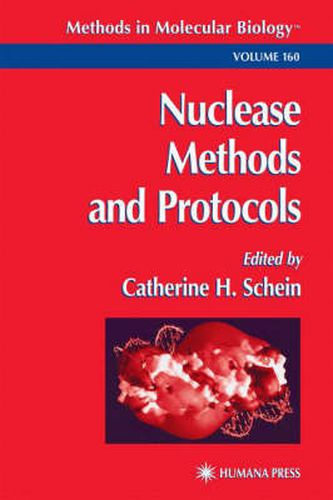Readings Newsletter
Become a Readings Member to make your shopping experience even easier.
Sign in or sign up for free!
You’re not far away from qualifying for FREE standard shipping within Australia
You’ve qualified for FREE standard shipping within Australia
The cart is loading…






Nucleases are enzymes that restructure or degrade nucleic acid polymers and are vital to the control of every area of metabolism. Many types of nucleases are used in laboratories and their commercial and clinical uses are expanding, thus this book has been developed to introduce the scientists to cell-characterized protein nucleases, and the methods used to determine their activity, structure interaction with other molecules and their physiological role. Also covered are protocols for studying the inhibitors and activators of nucleases, and methods to determine and model the 3D structure of nucleases and their complexes with substrates and inhibitors. A section covering nucleases in the clinic summarizes assays and protocols suitable for use with tissues and for nuclease-based therapeutics. All the chapters describe why and when to use the assays, and the thinking that went into the development of the protocols. The comments and notes sections provide guidance and insight when things go wrong and how to correct them. The protocols are also easily modifiable to suit the researcher’s needs as new developments in the field begin to emerge, thus making this an essential reference for all molecular biologists.
$9.00 standard shipping within Australia
FREE standard shipping within Australia for orders over $100.00
Express & International shipping calculated at checkout
Nucleases are enzymes that restructure or degrade nucleic acid polymers and are vital to the control of every area of metabolism. Many types of nucleases are used in laboratories and their commercial and clinical uses are expanding, thus this book has been developed to introduce the scientists to cell-characterized protein nucleases, and the methods used to determine their activity, structure interaction with other molecules and their physiological role. Also covered are protocols for studying the inhibitors and activators of nucleases, and methods to determine and model the 3D structure of nucleases and their complexes with substrates and inhibitors. A section covering nucleases in the clinic summarizes assays and protocols suitable for use with tissues and for nuclease-based therapeutics. All the chapters describe why and when to use the assays, and the thinking that went into the development of the protocols. The comments and notes sections provide guidance and insight when things go wrong and how to correct them. The protocols are also easily modifiable to suit the researcher’s needs as new developments in the field begin to emerge, thus making this an essential reference for all molecular biologists.